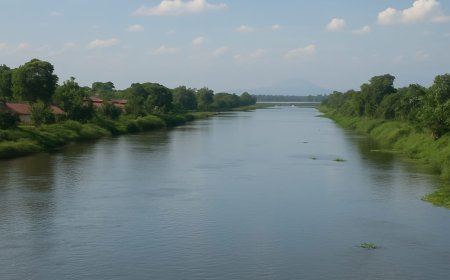"The Day After Tomorrow: Frozen Diplomacy in the Ice Age"
The main cause of the massive disaster and extreme climate change is a drastic alteration in the North Atlantic Ocean currents caused by global warming. Jack Hall, a paleoclimatologist, conducts research and discovers that Antarctic ice melting has increased the salinity of seawater, altering the density of seawater in the North Atlantic Ocean. Consequently, a drastic slowdown or halt occurs in the thermohaline circulation, the movement of seawater that influences global climate.

"The Day After Tomorrow" is a 2004 American disaster film directed by Roland Emmerich. The film offers a thrilling and spectacular visual portrayal of destructive climate change. The story revolves around a series of extreme weather events that lead to a new ice age, triggered by disruptions in the global climate.
The protagonist, Jack Hall (played by Dennis Quaid), is a paleoclimatologist who discovers that the world is on the brink of a new ice age due to disruptions in ocean currents caused by global warming. As the world is hit by a series of unprecedented natural disasters, including superstorms, tornadoes, and giant hailstones, Jack embarks on a perilous journey to save his son, Sam (played by Jake Gyllenhaal), who is stranded in New York City.

Illustration of The Day After Tomorrow Film (source: bing.com AI)
"The Day After Tomorrow" follows the dramatic journey of Jack Hall, a paleoclimatologist, who reveals the significant risks of global warming in his research. Along his expedition, the world finds itself trapped in unexpected extreme weather conditions, resulting in superstorms, hurricanes, and giant hailstorms. As Jack attempts to save his son, Sam, trapped in a freezing New York City, the audience is presented with epic action and tension involving dangerous journeys and fights for survival. Amidst the chaos, the film depicts the strength of family and difficult decisions that must be made in the face of a global disaster. Along with the environmental message conveyed, "The Day After Tomorrow" ends with hope and a desire to rectify mistakes, providing a glimpse into the human struggle against the consequences of climate change caused by human actions.
The main cause of the massive disaster and extreme climate change is a drastic alteration in the North Atlantic Ocean currents caused by global warming. Jack Hall, a paleoclimatologist, conducts research and discovers that Antarctic ice melting has increased the salinity of seawater, altering the density of seawater in the North Atlantic Ocean. Consequently, a drastic slowdown or halt occurs in the thermohaline circulation, the movement of seawater that influences global climate.
This change triggers a series of extreme weather events, including superstorms, tornadoes, and rapid freezing across much of North America and Europe. The scientific concept behind this scenario, while presented with high dramatization for cinematic effect, reflects scientists' concerns about the potential disruption in the thermohaline circulation as one of the impacts of global climate change caused by human activities, especially global warming.
In the end of "The Day After Tomorrow" (2004), after a challenging journey, Jack Hall successfully finds his son, Sam, in the frozen New York City. They manage to survive amid global disaster and successfully reunite their family.
Ultimately, the film shows a sign of hope amidst the destruction. Despite facing a harsh and difficult new ice age, there is an opportunity for rebuilding and learning from the mistakes that led to the disaster. The environmental message and warnings about the consequences of human-induced climate change remain, with the hope that humanity can take steps to prevent and mitigate potential adverse impacts on the environment.
(source: chatgpt)
What's Your Reaction?






















































